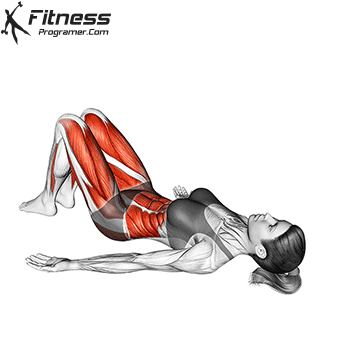How to do Corner Wall Stretch
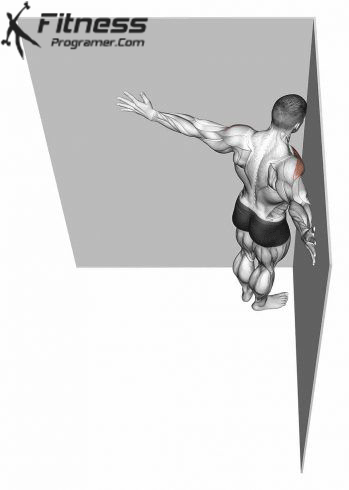
How to: Sitting Wide Leg Adductor Stretch
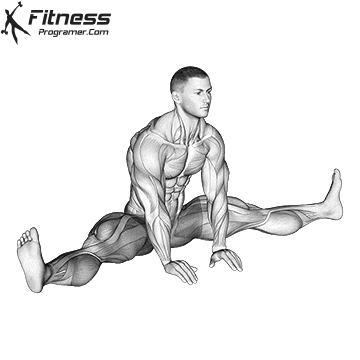
How to: Standing Wide Leg Adductor Stretch

Overview
Hip circles are a dynamic mobility exercise that gently opens the hip joint through controlled circular movement. Used in warm-ups, prehabilitation, and functional fitness, this low-impact drill enhances hip range of motion, improves blood flow, and prepares the lower body for more intense movement patterns. It’s commonly included in athletic warm-ups, yoga sessions, and physical therapy programs.
How to do perform Hip Circles
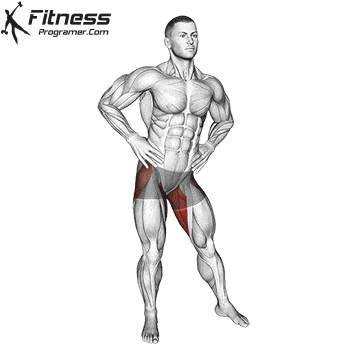
- Stand upright with your hands on your hips, your legs straight, and feet shoulder-width apart.
- Start to rotate your hips slowly in a clockwise direction. Keep your back straight.
- Continue the rotation back toward the start position with a smooth, controlled movement.
Tips for Proper Form
Move slowly and deliberately to control the range and avoid compensation.
Focus on the hip joint, not the lower back or torso.
Keep your core engaged to stabilize your spine.
Breathe steadily throughout the motion.
Avoid letting the pelvis rotate excessively—keep your hips square.
Common Mistakes
Rotating the spine or torso, reducing hip isolation.
Rushing the movement, limiting joint range of motion.
Letting the supporting leg collapse, which affects balance and control.
Using momentum, rather than muscular control.
Forgetting to reverse the direction, leading to imbalanced mobility.
Benefits of the Hip Circles
Improves Hip Mobility: Encourages full joint range of motion in multiple directions.
Increases Synovial Fluid Production: Helps lubricate the hip joint for smoother movement and injury prevention.
Activates Key Muscles: Warms up the glutes, hip flexors, and deep stabilizers.
Enhances Neuromuscular Awareness: Builds better control and coordination around the hip joint.
Reduces Risk of Injury: Prepares the hips and pelvis for squatting, lunging, and running.
Supports Functional Movement: Transfers to athletic performance and everyday movement patterns.
Gentle and Accessible for All Levels: Easily modified and suitable for beginners or rehab settings.
How to Incorporate Into Your Routine
- For Warm-Ups: Perform 1–2 sets of 5–10 hip circles in each direction per leg to prep for leg day.
- For Mobility: Include in a daily routine focused on joint range of motion or dynamic stretching.
- For Functional Training: Use before lunges, squats, or running drills to activate hip stabilizers.
- For Circuit Training: Add between strength movements as an active recovery tool.
- For General Fitness: Include in morning movement or cooldown routines to maintain hip health.
- For Rehab or Prehab: Perform with bodyweight and focus on slow, pain-free movement for joint integrity.
Muscles Worked
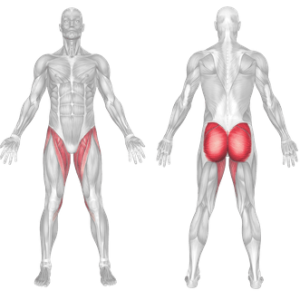
Frequently Asked Questions
Can hip circles help with hip pain?
Yes—when done with control and proper form, they can increase joint lubrication and reduce stiffness. Always consult a professional if pain persists.
Should I do them before or after workouts?
They’re best used as part of a warm-up, but can also be included in mobility sessions after workouts.
Can older adults benefit from hip circles?
Absolutely. They’re low-impact and improve joint function, making them ideal for older populations.
How often should I do them?
2–5 times per week is sufficient to see improvements in hip mobility and movement quality.
Parsva Balasana | Thread the Needle Pose
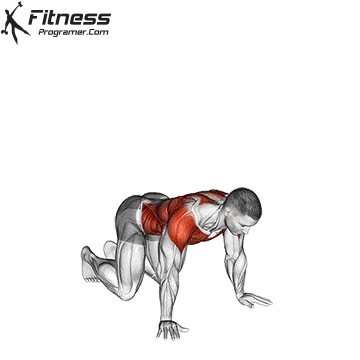
How To Standing Reverse Shoulder Stretch
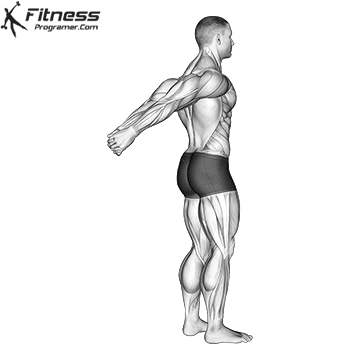
Dynamic stretching consists of active movements. It is usually done before a workout to help warm up your muscles and increase your heart rate. Move slowly, stop and repeat, dig a little deeper each time and improve your range of motion. Pre-workout dynamic stretching improves circulation, prepares your muscles for movement, and temporarily increases your range of motion.
Static stretching, more commonly done at the end of a workout when your muscles are warm, is when stretches are held in place for a certain period of time, not moving. Static stretching is the most effective form of stretching for loosening up your muscles, joints, ligaments, and tendons, while also improving flexibility and range of motion. Static stretching requires you to move a muscle to the end of its range of motion and maintain this position for 20 to 45 seconds. Repeat this 2 to 3 times each.
Standing Reverse Shoulder Stretch Benefits
- Shoulder stretches can help relieve muscle tension, pain, and tightness in the neck and shoulders. Including shoulder-specific exercises and stretches in your overall workout program may help increase your shoulder mobility and flexibility. These movements may also build strength in your shoulders, improve your shoulder function, and prevent injury.
Muscles Worked in the Standing Reverse Shoulder Stretch
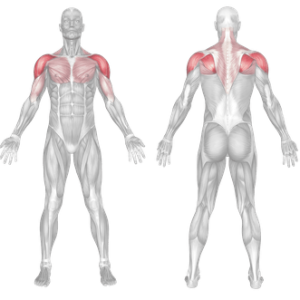
Doorway Pec and Shoulder Stretch
The doorway stretch is a stretching exercise that specifically targets the chest (pectoral) muscles and the front of the shoulders. While the stretch primarily targets the chest and shoulders, the lats and biceps are involved in the movement and can experience some activation and lengthening. It can help improve flexibility and alleviate tightness in these areas.
How to:
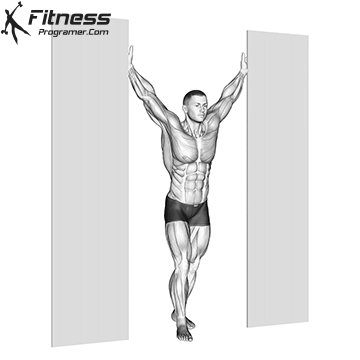
- Stand facing an open doorway.
- Lift your arms and place your hands on the door frame.
- Take a small step forward, gently leaning your body weight into the stretch.
- You should feel a stretch across your chest and the front of your shoulders.
- Hold the stretch for 15 to 30 seconds, while maintaining a relaxed breathing pattern.
- Slowly step back to release the stretch.
- Repeat the stretch for 2 to 3 sets.
Remember to perform the doorway stretch in a controlled manner, without forcing or causing any pain. If you have any shoulder or chest injuries, it’s important to consult with a healthcare professional before attempting this stretch or any other exercise.
Doorway Stretch – Benefits
Improved flexibility: The doorway stretch targets the chest and shoulder muscles, helping to improve their flexibility and range of motion. This can be particularly beneficial for individuals who have tightness or limited mobility in these areas.
Corrects posture imbalances: Many individuals tend to have rounded shoulders and a forward head posture due to factors like sedentary lifestyles and prolonged sitting. The doorway stretch helps open up the chest, counteracting these imbalances and promoting better posture.
Relieves muscle tension: The stretch releases tension in the chest and shoulder muscles, which can accumulate due to factors like stress, repetitive movements, or poor posture. Relieving muscle tension can help reduce discomfort and promote relaxation.
Enhances athletic performance: Improved flexibility and range of motion in the chest and shoulders can benefit athletes and individuals involved in activities that require overhead movements, such as swimming, throwing, or weightlifting.
Alleviates shoulder pain: The doorway stretch can provide relief for individuals experiencing shoulder pain or discomfort, particularly in cases where the pain is caused by muscle tightness or imbalances.
Injury prevention: By promoting flexibility and balance in the chest and shoulder muscles, the doorway stretch can help prevent injuries related to overuse or improper movement patterns.
Remember to always perform stretches within your comfort zone, avoiding any excessive or painful stretching. If you have any specific health concerns or conditions, it’s advisable to consult with a healthcare professional before incorporating new exercises into your routine.
Doorway Stretch – Muscles Worked
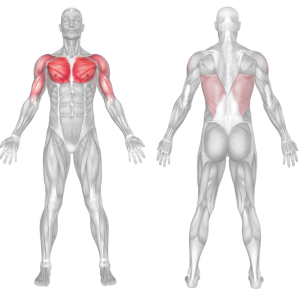
How to: Kneeling Leg Out Adductor Stretch
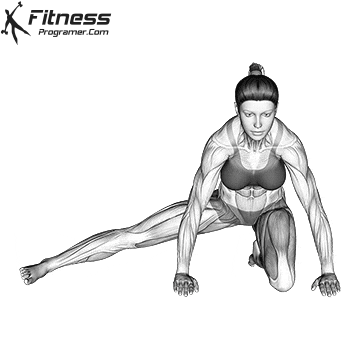
How to do Half Frog Pose / Ardha Bhekasana
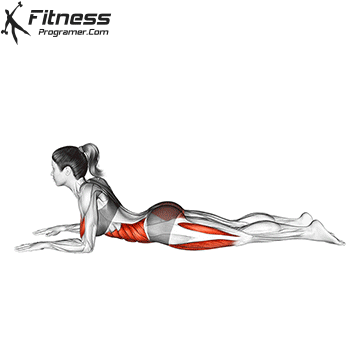
How to do Happy Baby Pose
